The
Lombardy-Venetia first issue stamps were officially introduced June 1st 1850,
a Saturday.
Even if the territory was in reality under the Austrian control they are anyway
considered as the first postage stamps coming to light in the Italian territory.
From the beginning the postage stamps of any issue cancelled in the first
day of use are in big demand by collectors and even more are the specific
parts of the Lombardy-Venetia.
Just for curiosity here is an article appeared recently in a national daily
newspaper (Fig. 1).
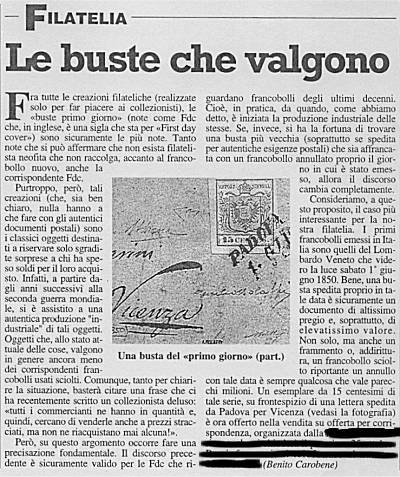
Fig. 1: the evidence that these
stamps are in big demand
comes also from the attention given by the press.
This article with in nice evidence a 15 centesimi used in Padova in the first
day if issue
appeared on the daily newspaper "Il Sole 24 Ore" of October 7th
2001.
(to avoid advertising I cancelled by purpose the reference to the auction
firm that put it on sale)
We know all the values of the first issue used June 1st, with the exception
of the 5 centesimi (that is known used from June 2nd). These stamps are very
rare, extremely rare on envelope (of the 10 centesimi only one sample, of
very recent discovery, is known in existence, published on "Catalogo
Sassone Specializzato ed. 2002") - Fig. 3 -
The indications given by the Austrian Administration on the cancellation system
of these "small rectangular pieces of gummed paper" foresaw
the exclusive usage of black ink. However, especially in the first months,
it's is possible to find also cancellation with different color inks, like
the red and the blue, previously already used in the pre-philatelic mails
(Fig. 2).
The various values are recognized used in the first day in different locations
and are much more in demand if used in a small location. Even the parts used
in the following days for the whole June month are somehow rare, in demand
and collected.
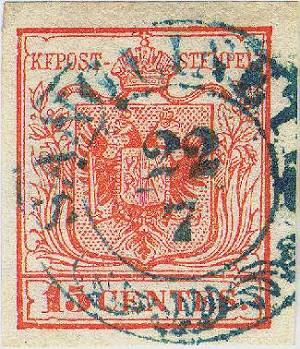
Fig. 2: blue cancellation of Sanguinetto,
used in the second month of issue
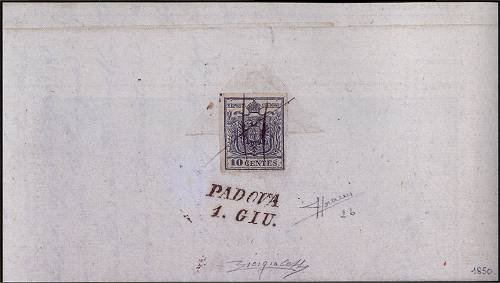
Fig. 3: the only known sample
of the 10c used in June 1st 1850
The stamp is cancelled with pen probably for the doubt got
by the postal worker on how to cancel the stamp.
From "Catalogo Sassone Specializzato" ed. 2002
Here follow three beautiful samples: 15 and a 30 centesimi cancelled June 1st 1850 and a 30 centesimi cancelled June 2nd 1850. When the stamp is single and therefore we don't have the absolute certitude of the year, its determination is based mainly on two factors: from one side the type and the printed quantity of the stamp and on the other side the type and the date of the cancellation, often used only in the first months of use of the stamps. These elements, together with the peculiarity of the very first printing runs give the certitude that we are dealing really with June 1st 1850. Under any stamp I give you a short descriptive note.
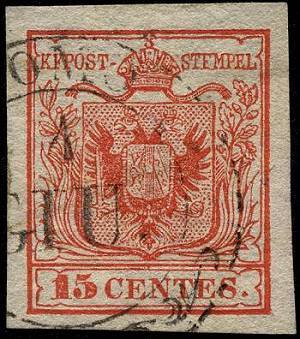
June 1st 1850: 1st day of issue
15 centesimi 1st type, 1st printing run on handmade paper.
Cancellation with the COMO double big circle
In this stamp the printing is very well defined as is typical only for the
first issue
that has also a particular red shade.
Every engraving detail is well visible and we can notice all the drawing details,
even the smallest, thing that does not happen in the following printing runs.
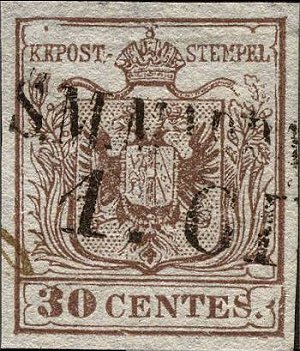 |
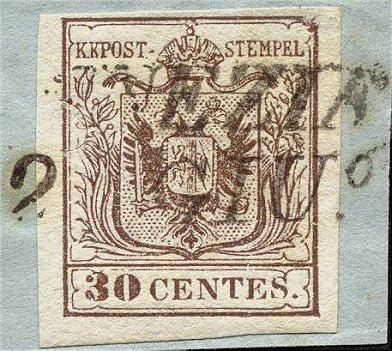 |
|
June
1st 1850 and June 2nd 1850: first and second days of use
30 centesimi, 1st type, 1st printing run on a handmade paper; the first one used in Santa Maria Maddalena and the second one in Venice. As in the previous 15c. even in this case it is possible to notice every detail of the original printing. A very important detail is the presence of various stereotype defects In the first sample we can notice the internal upper corner not completed, the lower ornament upper right corner after the "S" of "CENTES" broken and some printing missing under the letters "MP" of "STEMPEL". In the second part the upper right corner is not complete. These details say that the stereotypes were already defective at the origin and did not get worn only during their use as some authors are stating. Probably several defects were originated by the usage of the tables, but not so few were present already at the beginning. A last curiosity is how the right sample presents the intrusion of circular shape of an occasional body during the printing process, very visible over the "2" of the cancellation (an hair???). |
|